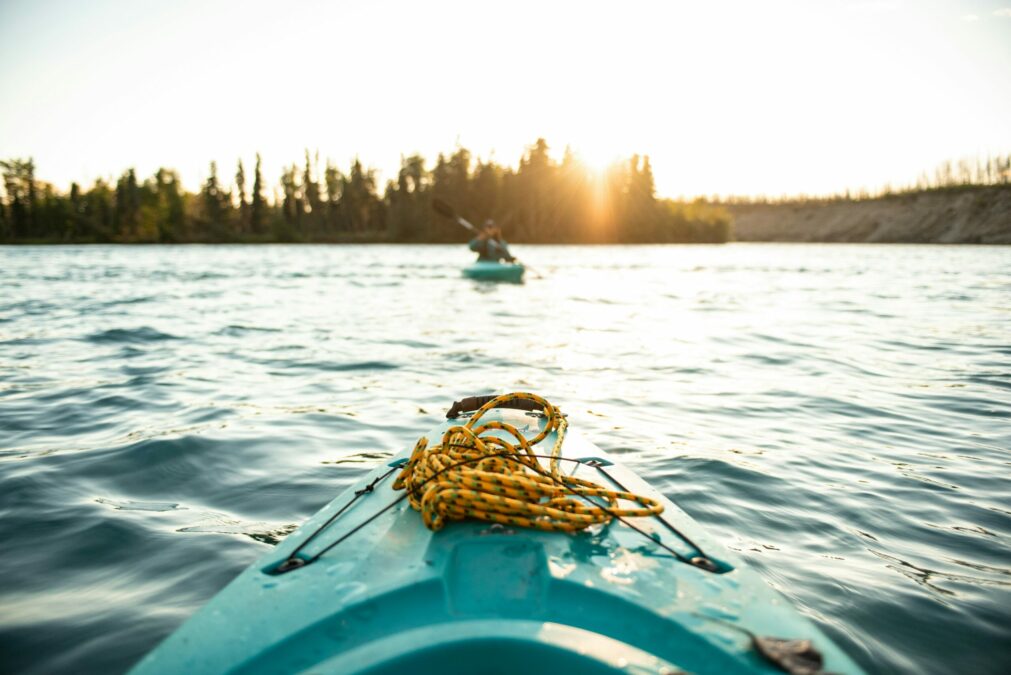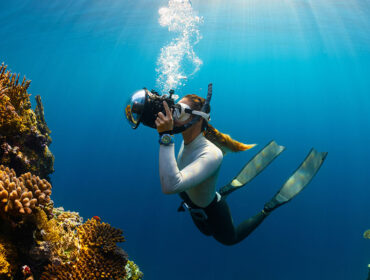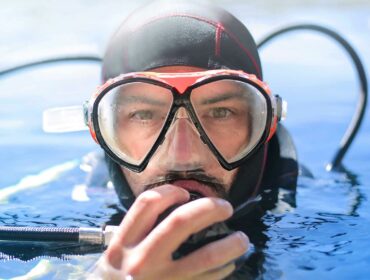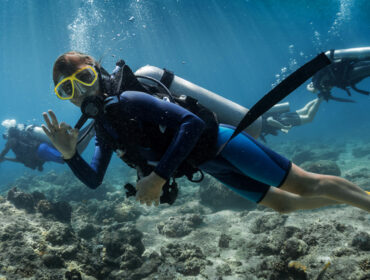Activities such as kayak diving are a pretty efficient way to explore environments beneath the surface. Not arriving in huge boats or canoes offers the right amount of flexibility and access to remote diving sites.
This guide will cover everything one might need for a successful kayak dive, including how to choose the right kayak, other equipment, safety tips, and techniques.
Step 1: Choose the Right Kayak
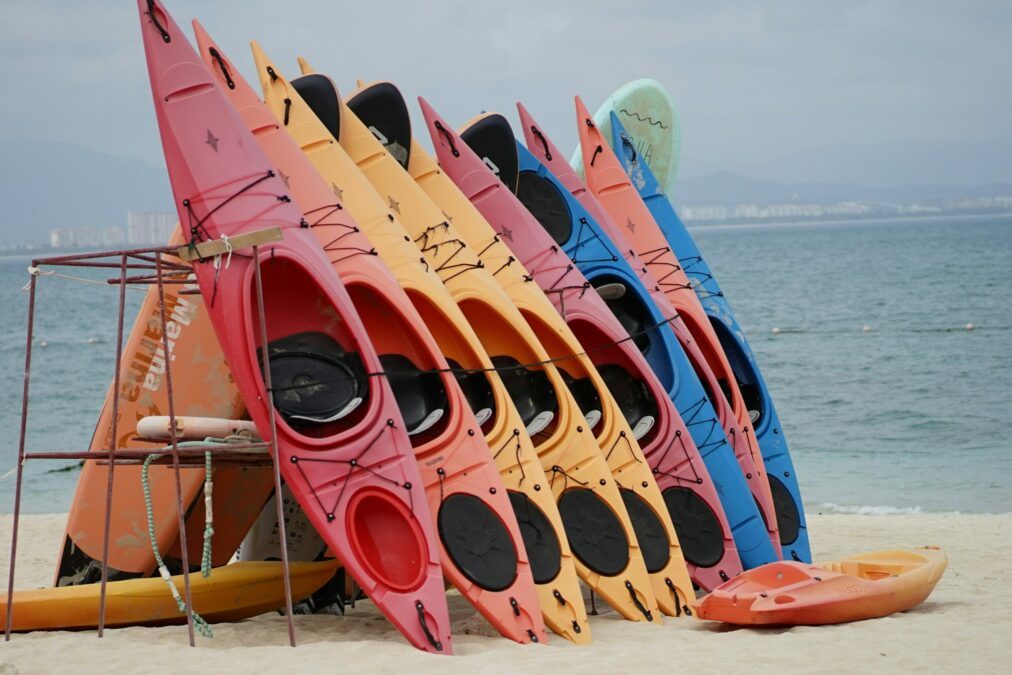
Sit-on-top kayaks are generally preferred for diving because they offer easier access to gear and more space for equipment. They are also more stable.
Length and Stability
When it comes to length and stability of a kayak, here’s how it goes. A longer kayak (spanning 12 to 14 feet) provides better tracking and more storage space, while a wider kayak offers more stability, crucial for handling heavy scuba gear.
Oru LT Sport Foldable Kayak
Three ways to describe this foldable kayak: easy to use, durable, and comfortable. Anyone can assemble this kayak in less than a minute, so it’s portable and easy to store.
If you want to know more, here you go: It’s made from UV-treated material, also designed to last a long time and resist damage. When it comes to weight, this kayak is light at just 28 pounds! However, it can carry up to 300 pounds, so you can bring plenty of gear.
Advanced Elements StraitEdge 2-Person PRO Kayak with Pump
This good-for-two kayak brings forward more advanced features. It has special aluminum and drop-stitch technology to make the kayak strong, fast, and easy to control – even for beginners.
Kayakers can make any adjustments necessary for both rough and calm waters, so yup, it’s very versatile. Its body is durable to resist punctures, has high-support seats, and contains adjustable foot pegs for comfort.
Step 2: Complete this Scuba Gear Checklist
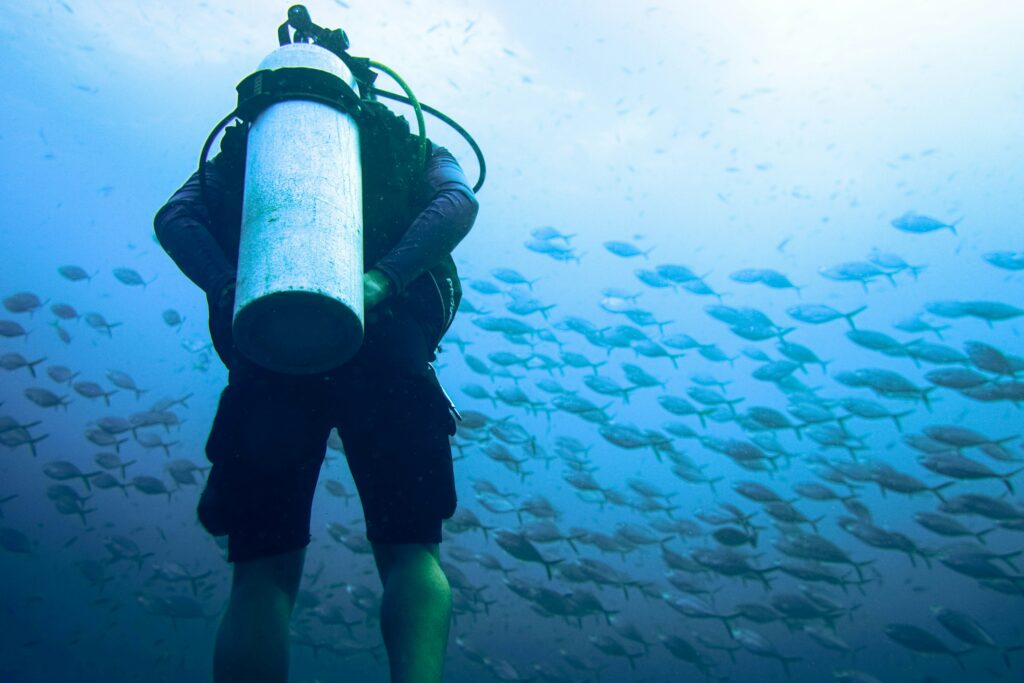
- Have a Complete Buoyancy Control Device (BCD): Go for a lightweight and compact BCD so it won’t take up too much space in your kayak. Alternatively, you can purchase back-inflated BCDs (Buoyancy Compensator Devices).
- Bring a Travel-Friendly Regulator: Choose a regulator designed for travel, which is lighter and more compact.
- Prepare Your Fins, Mask, and Snorkel: Keep these easily accessible for quick use.
- Have Your Tank Holders or Straps: Securely attach scuba tanks to the kayak using specialized straps or holders to prevent shifting during paddling.
- Pack Up on Dry Bags: Use these to keep items like your phone, keys, and snacks dry.
Step 3: Complete This Safety Gear Checklist
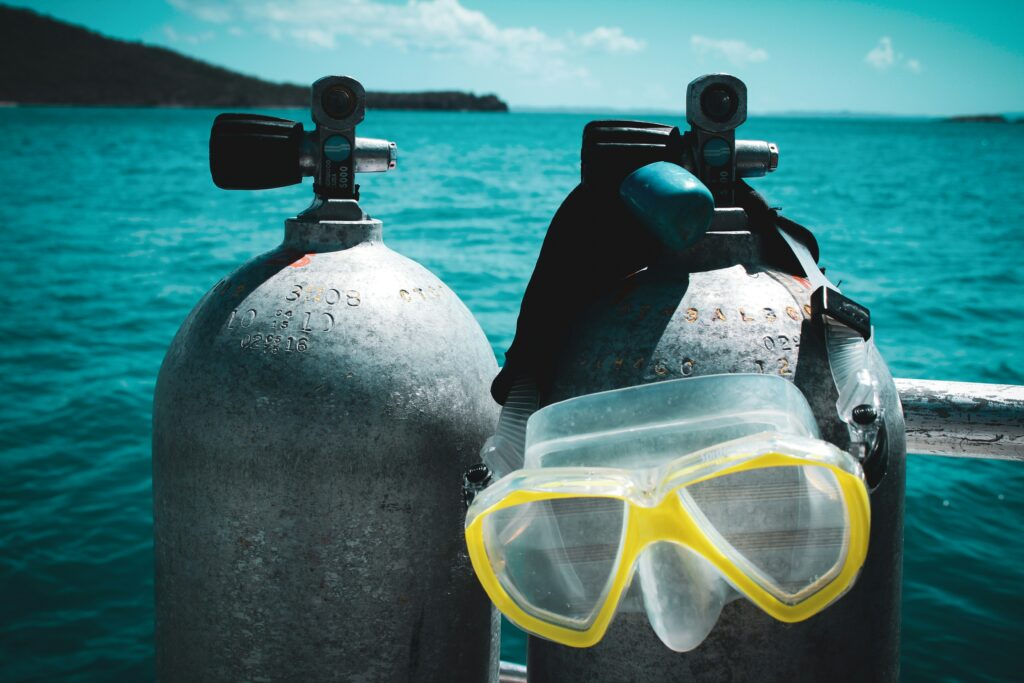
- Always Have a Personal Flotation Device (PFD): Even though you’re diving, a PFD is still very useful for paddling to and from your dive site.
- Hoist Up Your Dive Flag: Make sure to attach your dive flag to your kayak before going down under. This will alert other people to your presence underwater.
- Have a Kayak Anchor and Paddle Leash: Prevent your kayak and paddle from drifting away while you dive.
Step 4: Prepare and Load Your Kayak
Place your things strategically. Put heavier items like scuba tanks in the center of the kayak to maintain balance.
To secure your gear, utilize bungee cords or straps. While you do all this, make sure you properly organize your stuff to avoid shifting weight while paddling.
Before You Kayak Dive…
- Make sure everything is intact: Inspect all scuba gear for any issues before setting off.
- Buoyancy check: Perform a buoyancy check to ensure your equipment is balanced.
- One last sweep: Confirm that your kayak and gear are properly secured and balanced to prevent tipping.
Step 5: Launch and Paddle!
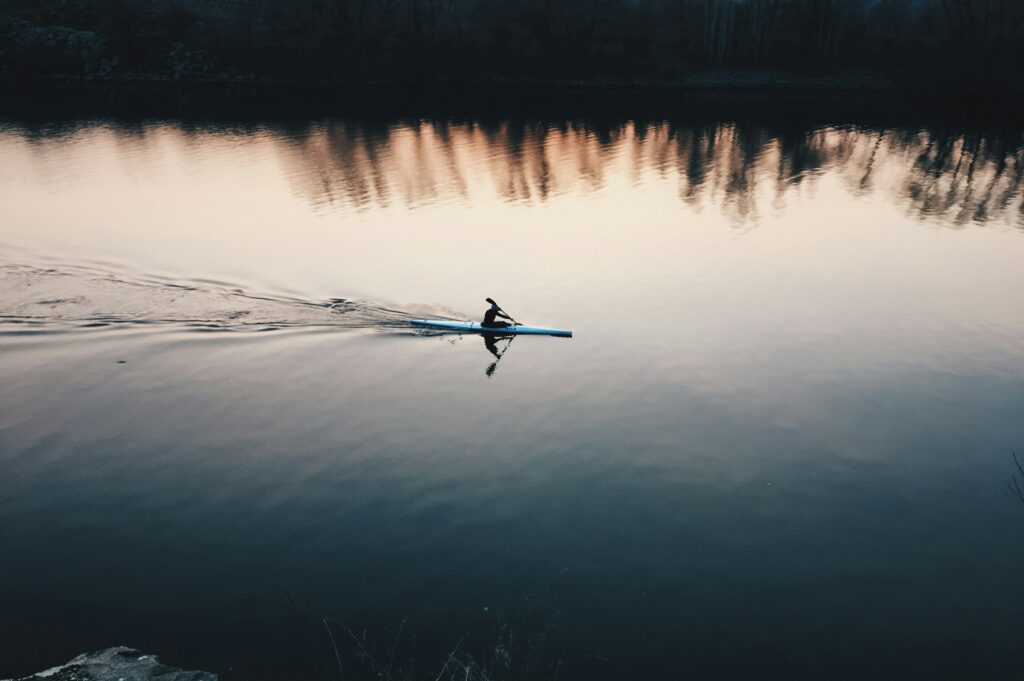
Launch your kayak from a stable, shallow area to make loading easier. When you’re confident you’ve got a good spot, get into your kayak and position yourself comfortably before starting to paddle.
Paddling Techniques
- Use efficient paddle strokes to conserve energy for the dive.
- Maintain a steady, moderate pace to avoid exhaustion.
- Keep an eye out for important signs such as weather conditions and water currents.
Step 6: Arrive at the Kayak Dive Site
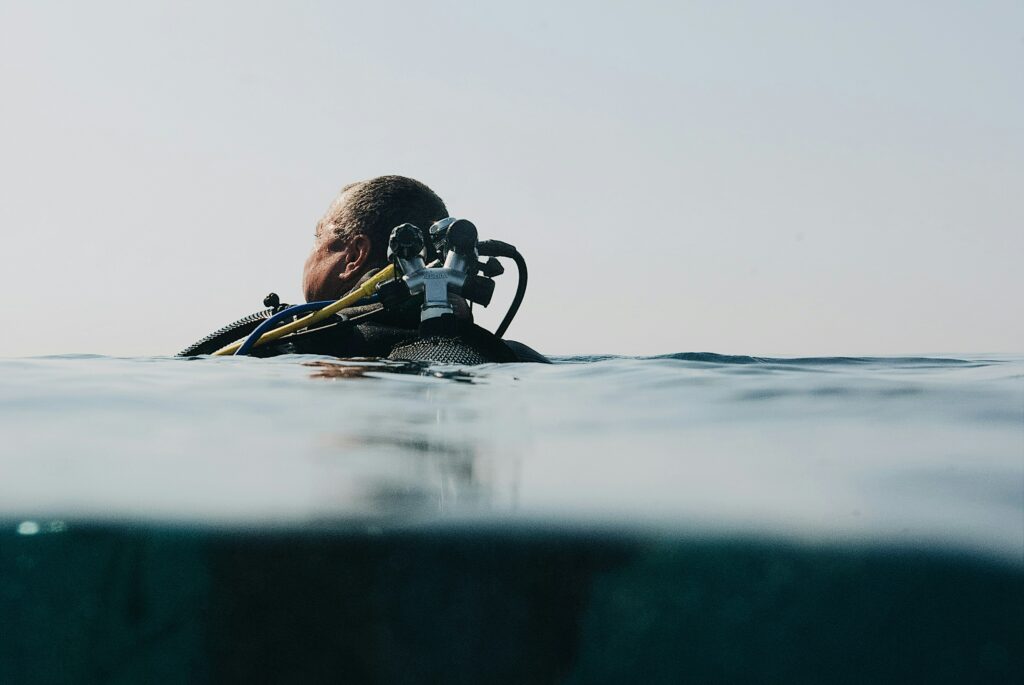
Anchoring
Use a small, portable anchor to secure your kayak at the dive site. Ensure your kayak is well-anchored to avoid drifting. Alternatively, secure your kayak to a mooring buoy if available.
Time to Enter the Water
Don your scuba dive gear while seated in the kayak to prevent losing balance. Afterwards, carefully enter the water by sliding off the side of the kayak, holding onto it for stability if needed.
Step 7: Remember These While Kayak Diving
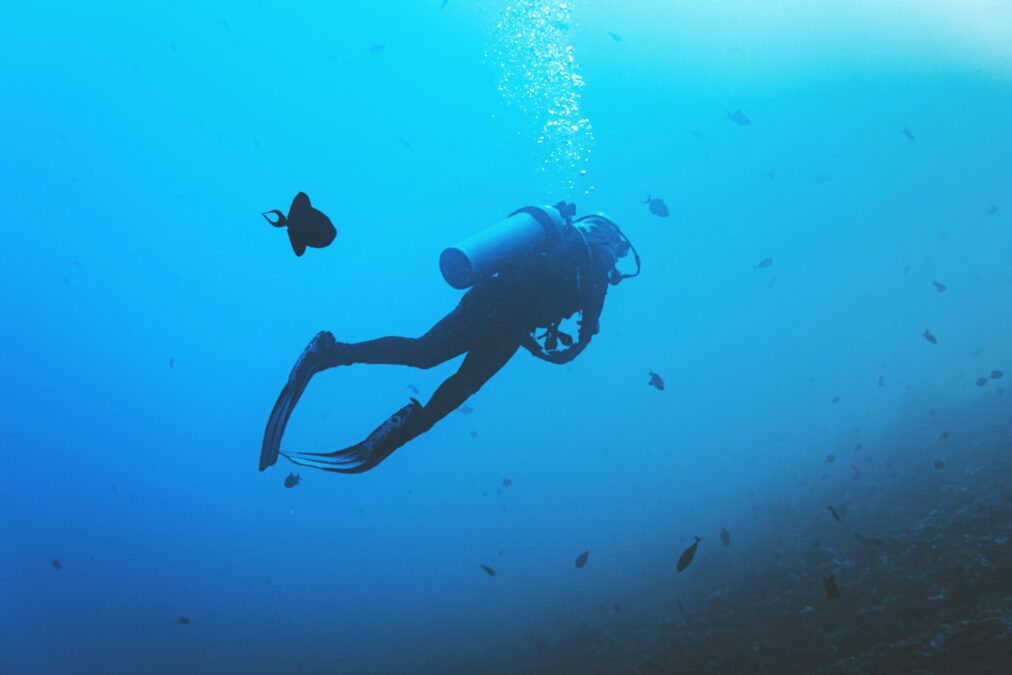
Navigation
Note your entry point and landmarks to ensure you can find your way back to the kayak. If you can, use an underwater compass or dive computer that has navigation features.
Safety
Be sure to maintain close proximity to your dive buddy. Closely and consistently monitor your air supply and bottom time to avoid running out of air or exceeding dive limits.
Step 8: Exit the Water
After your scuba dive venture, it’s time to re-enter your kayak. Here’s how it should go:
- First, remove your fins and any other gear that might hinder your re-entry.
- Second, grab the side or rear of the kayak to pull yourself up, distributing your weight evenly to avoid capsizing.
- Finally, once aboard, secure your gear and prepare for the paddle back.
Stowing Gear After Kayak Diving
Properly stow and secure all scuba gear the same way you did at the start to maintain balance during the return trip. Remember, use dry bags for any wet items to keep the kayak organized and dry.
Step 9: Return to Launch Site
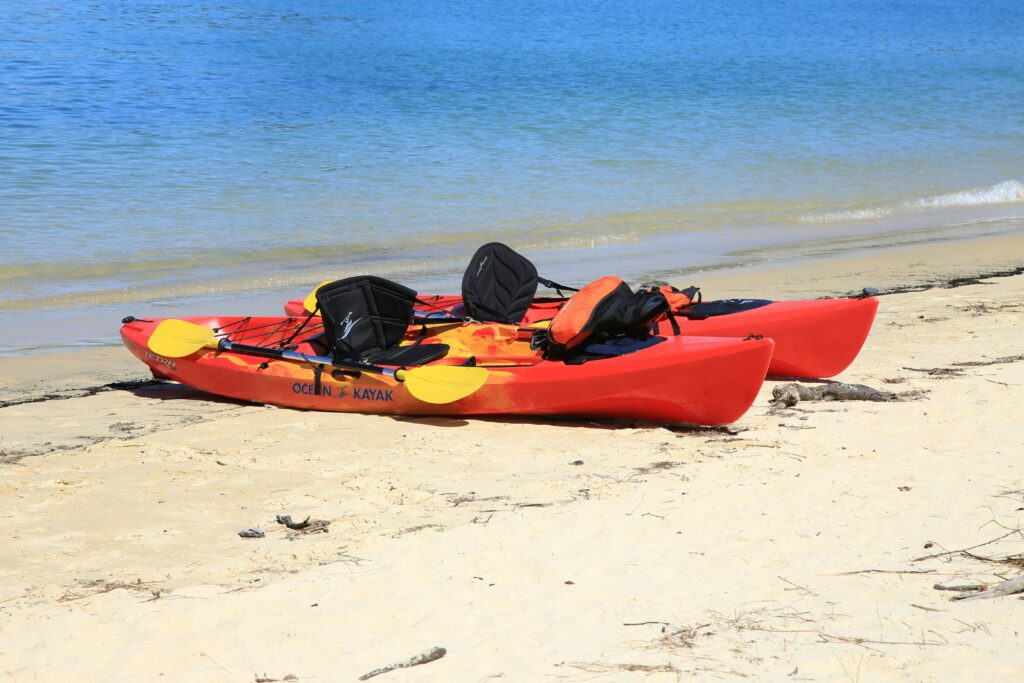
Good job, you’ve made it through your kayak dive! Now, it’s time to return to your initial site.
Paddle back to your launch point, once again keeping an eye on weather and water conditions. Maintain a steady pace and use efficient paddle strokes.
Step 10: Post Kayak Dive Care Checklist
Rinse all gear, including your kayak, with fresh water to remove any salt and debris. Before you head back home, check and maintain all equipment to keep it efficient for every scuba dive in the future.
Tips for a Successful Kayak Diving Experience
- Always Plan Ahead: Always plan your dive and kayak route in advance. Check the weather and tide conditions.
- Stay Hydrated and Energized: Bring plenty of water and snacks to stay hydrated and maintain energy levels.
- Practice: Before attempting a dive, practice handling your kayak with scuba gear in a controlled environment.
- Utilize a Buddy System: Never dive alone. Always have a dive buddy and inform someone onshore of your plans.
Why should I kayak dive?
Access Remote Areas
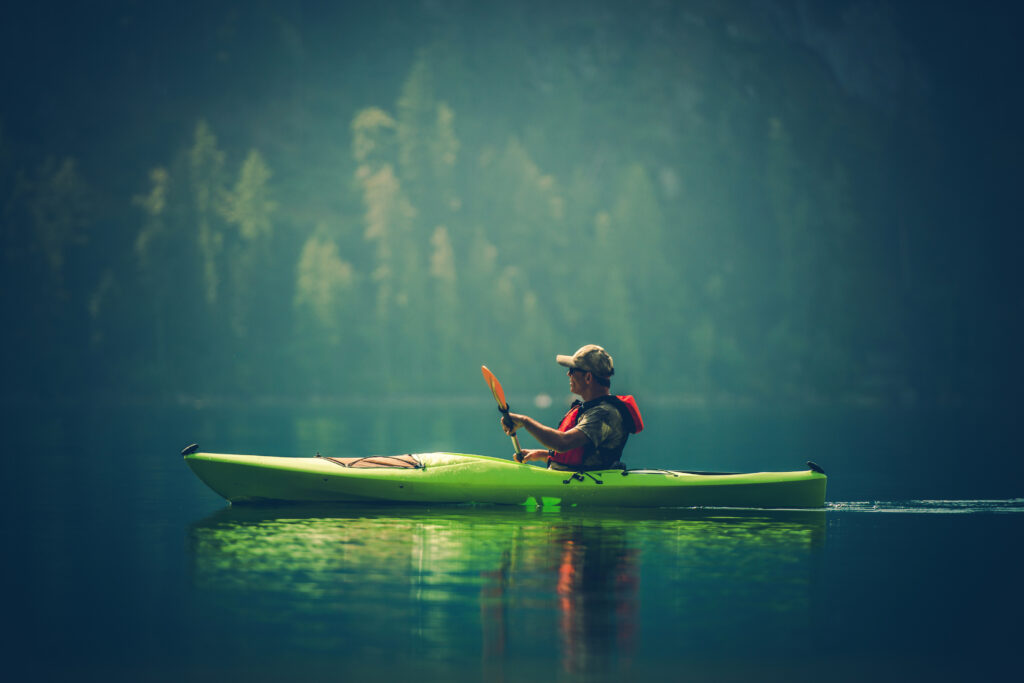
Kayaks, with their narrow profile and shallow hulls, allow you to maneuver into many places a boat couldn’t access, like side channels and locations with difficult shore access.
In some areas, passage through rip tides and currents can be easier with a kayak than with bigger boats. If it’s too far to swim but you don’t want to rent a boat, a kayak dive might be the perfect solution.
Be Environmentally Friendly and Independent
Kayak diving liberates you from having to depend on a boat or other watercraft that requires fuel. With your own kayak, you can choose when and where you dive on your schedule.
Since there are no engine fuel needs or motor noise, this mode of transportation is very environmentally friendly — and cheap! No fuel costs or boat charter fees when you go on a dive with a kayak.
It’s a Full Body Workout!
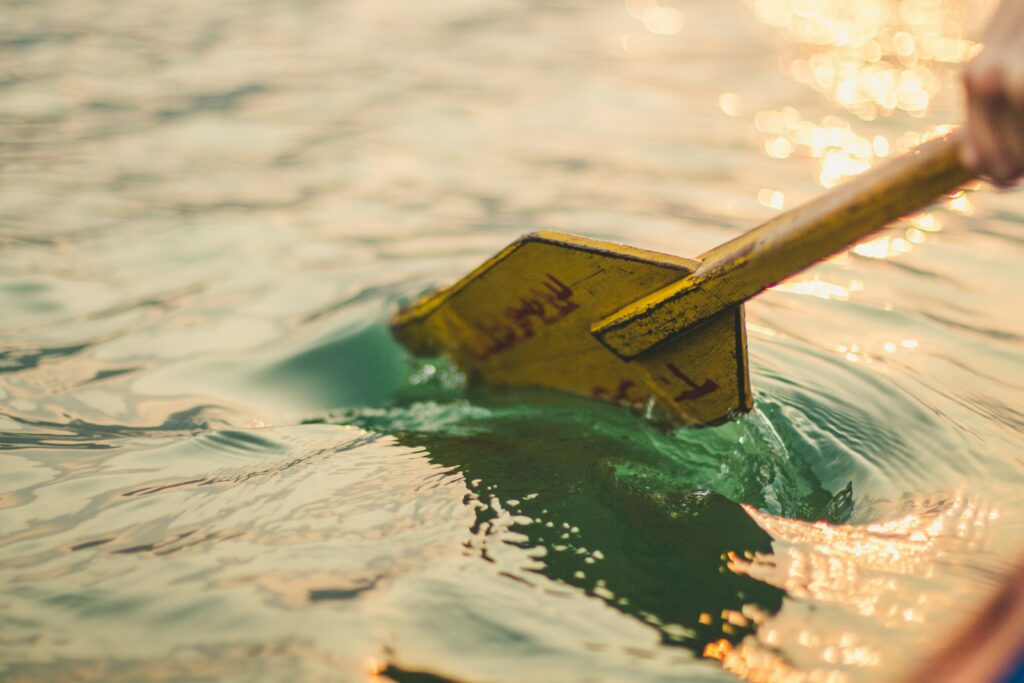
Why lift weights in a boring, smelly gym to tone up? Paddling a kayak engages muscles in your arms, torso, and even legs, which gets you warmed up for your dive. You’ll definitely burn more calories than you’ll be able to consume on your kayak dive. If you’ve plateaued in your weight loss goals, this could be the next step to success.
Enjoy an Intimate Kayaking Experience
A kayak dive is an adventurous experience bringing you closer to the aquatic ecosystem. You can feel the waves and currents with your whole body. You can see marine life more easily, making for a more rewarding experience.
Final Thoughts: Kayak Dive Now!
Scuba dive from a kayak and be rewarded with a thrilling experience. By kayak diving, you’re blending the wonders of kayaking with underwater exploration.
With proper preparation, equipment, and safety measures, you can enjoy this unique adventure while minimizing risks.

